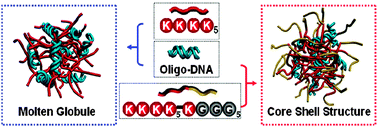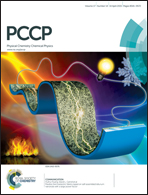Peptides containing blocks of different charge densities facilitate cell uptake of oligonucleotides†
Abstract
Polyelectrolyte complexes (PECs) are of great importance in drug delivery and gene therapy. The density and the distribution of the charges are key parameters of a polyelectrolyte, determining the structure of the complex and the kinetics of the complexation. Using peptides of precisely-controlled charge density as model molecules, we showed that the presence of weakly-charged peptides, (KGGG)5 or (KGKG)5, did not affect the complexation of highly-charged peptides (KKKK)5 with 21 bp oligonucleotides. However, peptide containing blocks of different charge densities, such as (KKKK)5-b-(KGGG)5 or (KKKK)5-b-(KGKG)5, exhibited superior performance during complexation. With a relatively uniform small size, the complex was also stable in serum. More importantly, the cellular uptake of the complex was greatly enhanced by a ratio of 40–60%, compared to that of the complex formed by uniformly-charged peptides. We attributed the improvement to the structure of the complex, in which the highly-charged blocks form the core with the oligonucleotide whilst the weakly-charged blocks dangle outside, preventing the complexes from further aggregation.


 Please wait while we load your content...
Please wait while we load your content...